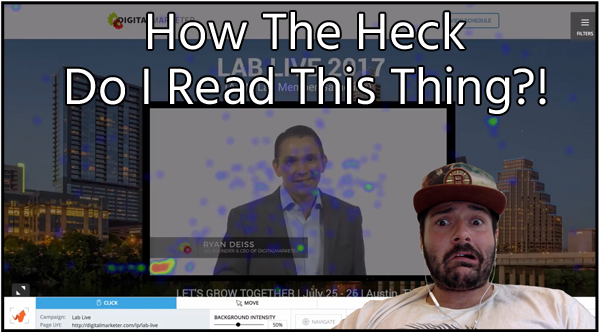Contents
The Ultimate Guide to Setting up An Editorial Calendar for Content Marketers
Do you have an editorial calendar for your content? If the answer is no, then the bigger question is how do you plan on growing your blog without a calendar to plan out the course of your blog content?
Like all great ventures, you need to have a plan. The editorial calendar is the best tools any content marketer can have to plan out their content marketing strategy.
You can do everything in your editorial calendar from creating task roles for a team of writers to keeping on task with your blogging. Plus, it lets you know whether you are staying on top of your content marketing strategy.
It is a powerful tool to help you understand what content you need to include in your blog.
That is why we created the ultimate guide for content marketers to set up their editorial calendar. Otherwise, your blog is just a hobby.
What is an editorial calendar?
An editorial calendar simply helps blogs break down their content marketing schedule over the course of a specific time period.
Many multi-author blogs like Kabbage and Buffer use tools like Trello to create an outline of the themes they want to cover over the course of a month. By planning ahead, they can assign content to specific writers and create complete campaigns around specific themes.
For example, if Buffer has a theme around the idea of Social Media Planning, then the editorial calendar helps them organize the entire week of content from start to finish.
That is just one of the many benefits of using an editorial calendar.
The Benefits of an editorial calendar
#1 Publish regularly
For a long time, bloggers have known that when you post quality content on a regular basis, you can build a huge audience. An editorial calendar is the planning tool to make that happen.
This is important, because your readers start to expect a new post at certain times. If you disappoint them, then you can lose that traffic.
Take CalorieSecrets.Net. Because of regular posts, they were able to build up to 250,000 visits per month. The majority of the traffic coming from Google.
The calendar helps you know what content you need to publish, so everything is done on a regular basis. Additionally, you can then share that content out to clients and prospects, so they can learn from your information.

#2 Eagle Eye View
Creating content on a regular basis is definitely a good thing. However, it can be challenging as well. When you have to manage multiple writers on different topics you run the risk of missing content and making mistakes.
That is why sites like SocialFresh.com keep an editorial calendar. They need to have an eagle eye view at their content marketing strategy. In the past three years, they have published over 150 contributors to the site. That requires a lot of patience and strategy.
As their CEO, Jason Keath, mentioned, “We want to get a process down that turns your blog into a content marketing machine. Once you become comfortable with a process, a blog with multiple contributors provides a wealth of benefits.”
A master editorial calendar lets you see all of your content at once. That is huge when dealing on the micro level with multiple authors blog posts. You now can see whether you missed specific topics.
Furthermore, you can track key dates to determine if they will impact your content schedule. For example, if you write for your toy business then you need to have a schedule around specific gift based holidays like Christmas.
Finally, the eagle eye view of the editorial calendar provides you with the ability to plan content by category. That way you can create an editorial guideline that ensures consistency throughout your content shared on your blog.
#3 Reduces the risk of burnout
As a blogger, I can tell you that one day you will hit a wall. Sometimes you slam into that wall, and other times it sneaks up on you.
Either way, creating content at a continually high rate increases the risk of burnout. This is something that happens across the board.
Take this case study from Be A Better Blogger.
Normally, Kevin Duncan publishes one large article per week. However, he tested out how publishing every day would impact his blog. While the results for his blog were mixed, one thing was certain. His happiness decreased significantly when posting every day.
In fact the blog post was titled, Blog Traffic Case Study: How publishing daily increased my traffic 46% and decreased my joy 72%. That should say it all about the possibility of burnout over time.
The problems that Kevin faced was that sharing the content onto social media became more challenging on a daily basis.
First, fewer people shared every individual piece, and the comments on each post were drastically reduced. From an SEO standpoint, this is not good. However, the traffic for the week was up 46%.
Second, he had to share content every day. That in and of itself makes daily posting more intense.
An editorial calendar can help manage this part of this problem. He mentioned how if you bring in a multiple authors or guest posts you can reduce some of the burdens of time and promotion. That brings it back to the eagle eye view benefit we just mentioned.
Making sure that writers do not burn out is a major issue. When that happens, writers slack, content gets worse, and writers block ensues. Planning can go a long to prevent this issue.
Gloria Rand stated, “An editorial calendar can be a great counter to writer’s block.” That is because it makes writers life easier. Making things easy is a great preventative tool to burnout.
#4 Multiple Contributors Expand Reach
If you really want your blog to take off, you probably need multiple contributors. To do that, let’s talk about how editorial calendars can expand your field of vision.
Multiple authors expand your reach and your community. That is because each writer brings their own social network to the blog when they write. Each time they share their content with their audience, they potentially grow yours as well.
These connections can be invaluable sources for blogs that look to grow through social media in addition to search engine optimization.
#5 Regular Content Brings In Traffic and Revenue
The final benefit of editorials is a cause and effect advantage. Whenever you drive more traffic, you have the potential to drive more conversions. Quick Sprout diverts 8.26% of their traffic to sales pages that drive over $100,000 in revenue each month.
Setting up your Editorial Calendar
A few different options exist to set up your editorial calendar. We discuss them more in detail below.
#1 Google Calendar
Going back to the eagle eye view, Google Calendar is a great way to see your master plan in action. Look at your content from a bird’s eye perspective to determine the validity of your content marketing strategy.
If you want to create your own editorial calendar with Google Calendar, use this Editorial Calendar Template.
#2 Trello
As we mentioned above, Trello is a powerful tool that any content marketer can use to determine the specific themes and overall direction of the content for the blog.
Buffer likes it because you can schedule posts a week at a time with the “fluid to-do board.”
Because of this, they can move content where needed, and publish whenever the content is ready.
#3 WordPress Plugin– This is a brief introduction to using WordPress for your editorial calendar. While the other platforms are useful and work with WordPress, most companies want to incorporate their calendar directly into their blog. That means using a WordPress plugin is key. We talk more about that below.
List of Editorial Calendars WordPress Plugins
Editorial Calendar- The first WordPress plugin is appropriately named the Editorial Calendar. From the calendar, you can view all of your blog posts. The drag and drop feature make it easy to manage the overall look for your blog.
That is why major blogs like Copyblogger.com and Chris Brogan.com use the platform.
Remember, because this plugin is connected directly to WordPress you can then click on specific posts to ensure they are ready to be published or add content.
As DadMan stated, “The Editorial Calendar is one of the plugins I install on every blog I manage or develop… the option to see a week, a month or three, gives you a full view of your writing, and the possibility to control anything regarding your posts.”
Oasis Workflow- As the name suggests, Oasis Workflow creates an easy to use workflow of your content marketing in an easy to use graphic interface.
You can use the plugin to create simple tasks like assign, review, and publish content. This works well with blogs that need a role-based system for assigning tasks and content.
You can also audit your history through a cool process history tool. Then if the workflow changed, you can review previous versions to determine what changed over time.
Finally, Oasis provide due date and email reminders writers can use to publish their articles in a timely manner.
The Pro version integrates your editorial calendar with your online marketing plan.
This final WordPress plugin connects to CoSchedule. CoSchedule is impressive, because it is an editorial calendar anda social media calendar as well.
When you use the drag and drop features of the plugin, you can use it for blog teams that want to unify their entire social and blogging content schedule. What a great way to grow traffic on your blog.
One of their users, Andrea Hall mentioned how, “The simplicity of the tool and ability to schedule posts on multiple platforms…better coordinate blog posts and social media scheduled through CoSchedule’s compatibility with WordPress.”
Integrate Your Editorial Calendar with your Online Marketing Calendar
Since we ended with CoSchedule it is only right to bring up the integration between your editorial and online marketing calendar.
Your editorial campaign only includes one aspect of a larger marketing campaign. Therefore, make sure you had a 3D editorial calendar. That is a calendar that works across different medium.
One that has space for other website content like sales and landing pages; email marketing follow ups and newsletter; and social media.
This gives you the ability to integrate blog posts with other media. Take for example, the Mowing with Goats post that Google posted a few years ago.
Apparently, they use goats to mow their lawn. The story gained traction through their blog, and the content was shared through other online marketing channels.
By doing this they generated a lot of buzz over a very weird story. If you own a related business, like lawn care, can you imagine how much traction sharing a story like this will get for your company?
You have the potential to get a lot of shares for the story, and then build traffic for your business. All of that is easier with an integrated calendar, because you can time your blog posts with your social media content and email newsletter.
The combination of the three does more for your blog than one version by itself.
Final Thoughts
At the end of the day, your blog needs to look professional. The best way to do that is to create amazing content on a regular basis.
Your editorial calendar is a key component to that process. It is your guide, so you can stay focused on the right content for your website.
The bigger you grow your blog team, the more you can manage that process through an editorial calendar. Then you can grow your team and create more dynamic content for your blog.
Content marketers have a number of choices to look at why they want to use this tool for their blog. Let us know how you feel that an editorial calendar improves your blog in the comment area below.








